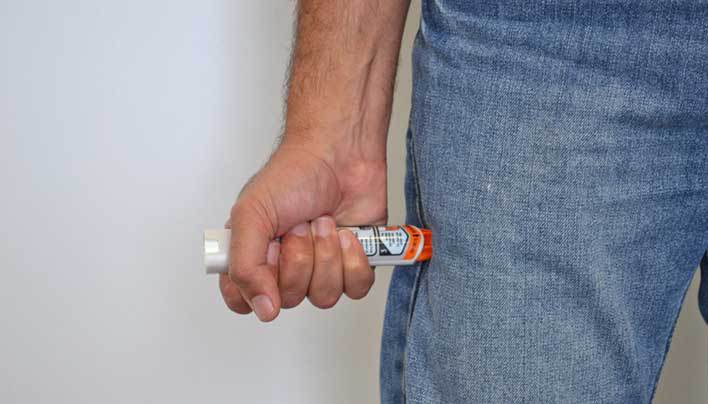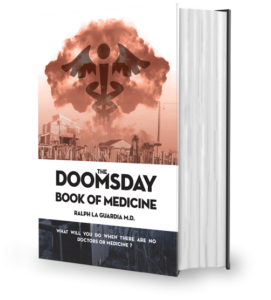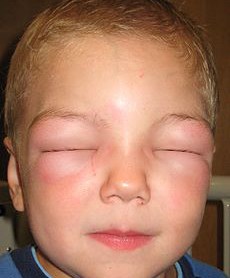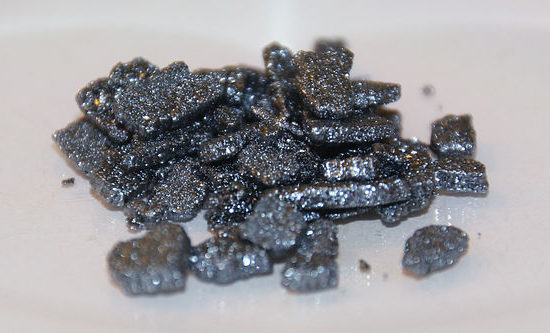
According to the CDC the prevalence of food and skin allergies has increased at an alarming rate in children under the age of 18 from the year 1997 to 2011. Additionally, they say that Allergic conditions are the most common medical conditions affecting children in the US so it is highly likely that you will have to plan for dealing with allergies in one form or another if the grid goes down. Your plan may involve members of your own family or if you are working within a larger group, chances are that one of the members will have some level of allergic concern.
Allergic Reactions: What’s Normal, What’s Not?
Allergies are common and usually not life-threatening. But there can be cases of anaphylaxis, a severe allergic reaction that needs immediate medical treatment. If you aren’t able to get to medical treatment, you will need to know the difference in a normal allergic reaction and one that will require treatment. If you have a family member who has allergies you will need to take that into consideration when you are planning your family’s medical supplies and even food stores. It is great to have plenty of stored food for your family, but you will also need to take precautions that members with allergies are protected, planned for and you know what to do if they are faced with a serious allergic reaction.

You don’t have to wait for a crisis to use this book. Details and how to get it here
Allergy Symptoms: What’s Normal
Kids with mild allergies (such as seasonal allergies) will usually have these symptoms:
- Watery, runny eyes
- Runny nose
- Sneezing
- Nasal congestion
- An itchy rash or hives
Swollen eyes due to allergic reaction
These symptoms usually aren’t serious and often work themselves out. Actually, I believe that some types of allergies (not food allergies) are helped by exposure but this is completely anecdotal and is just my opinion. For example, I used to sneeze my head off years ago every time I would cut the grass and it got worse as I got older. A few years ago I started walking outside every day at lunch and since that time; I have not had many allergy symptoms at all. At least they didn’t last more than a few hours tops and they are very infrequent. I believe that my exposure to the common elements outside that were making me sneeze reduced my allergic reaction to cutting the grass. It’s kind of sad if that is true though because that means I used to spend entirely too much time indoors.
A box of tissues and plenty of water help in some of these situations, but you should stay on the lookout for more serious allergy symptoms (see below), especially in kids who have a history of asthma and severe allergic reactions. For children on an inhaler make sure you have plenty of stores in your medical kit. You don’t know if you may be unable to get to the store again.
Anaphylaxis Symptoms – Much more dangerous
Get medical help right away if possible at the first sign of anaphylaxis. Watch for trouble breathing, low blood pressure, and change in consciousness. Other symptoms include:
- Hives
- Swelling of the throat, face, lips, or tongue
- Tightness in the lungs
- Wheezing
- Hoarseness
- Pale or flushed skin
- Sweating
- Weak, rapid pulse
- Nausea, vomiting
- Abdominal pain
What Can Cause Anaphylaxis
Foods
Peanuts – Peanuts are the most common cause of food-related allergy death. They can trigger anaphylaxis — a reaction that may be fatal if not treated right away. Symptoms usually start within minutes of exposure. But they can also start within seconds or take hours to develop. You may need to take action at the first sign of swelling, hives, trouble breathing, a rapid pulse, or dizziness. If your food stores involve peanuts or you know your children have this allergy, make sure they are replaced immediately. This is probably something you have done already if the children are yours but may need to adjusted for a larger survival group.

This is a manual that you can use to keep your body vigorously healthy and disease free. Details HERE
Shellfish and Fish – About one half of anaphylaxis cases are related to food. Shellfish, such as shrimp, lobster, and crab are triggers for some people. Shellfish and fish allergies can be so serious that just the cooking vapors can sometimes trigger an allergic reaction. As a reaction gets worse, tissues swell, blocking airways, and people can have deadly heart and circulation problems. If your survival plan has as one of its legs fishing for your food in the ocean, you should make sure this will not affect your family.
Sesame Seeds, Tree Nuts – The tiny sesame seed can cause an anaphylactic reaction. Legumes such as lentils, peas, soy beans, and other beans can also cause reactions. They’re related to the peanut, which is actually a legume. Real nuts such as cashews and walnuts also tend to cause problems for some adults. Make sure you have tried out all of the food you are storing up and if possible, you should be eating your food stores to develop a good rotation system. Finding out you are allergic to beans when you have hundreds of pounds of them stored will not be good.
Dairy and Wheat – In addition to peanuts, children are often allergic to wheat, milk, and eggs. Because triggers can be hidden in other foods, read labels carefully. By law, the eight most common allergenic foods — milk, eggs, fish, shellfish, tree nuts, peanuts, soy, and wheat — and ingredients made from them such as lecithin (soy) and whey (milk) should be listed. All of the hard red winter wheat in your food storage pantry won’t be much good for someone who is gluten intolerant. For someone who has full blown Celiac disease, the initial reaction produces inflammation which damages the lining of the small intestine. This prevents the absorption of some nutrients. If a change isn’t made, weight loss, bloating and diarrhea can start. Neither is good in a grid down scenario.
Drugs
Prescription medicines – Penicillin and other antibiotics are common causes of drug-related anaphylaxis. Chemotherapy drugs, imaging dyes, and muscle relaxants used in anesthesia can also cause problems. To prevent medication-related anaphylaxis, your doctor may suggest allergy shots or prescribe different medications. This is probably less of a concern long term, but could impact you short term if someone has just recently started taking medication like this.
Over the counter pain relievers – Even medications you can buy over the counter can trigger anaphylaxis in some people. Aspirin, ibuprofen, and non-steroidal anti-inflammatory drugs (NSAIDs) are some that may cause severe allergic reactions.
Insect Stings
Bees – Venom from honeybees, yellow jackets, wasps, and hornets cause anaphylaxis in about 3% of Americans. If you have had a reaction to a sting or suspect an allergy, see an allergist about allergy shots. Allergy shots are 97% effective at preventing anaphylaxis from insect stings. Some sources suggest that you should avoid wearing perfume or cologne and bright colors as they can attract stinging bugs. I don’t know how accurate that is, but then again I don’t wear cologne or bright colors usually.
Ants and ticks – Crawling, biting insects like ants and ticks can cause severe allergic reactions just like flying, stinging bugs. Fire ants can inject their venom over and over. Watch out for ant nests to avoid the painful bites of these bugs. Wearing closed-toed shoes, pants, and long sleeves outside may also help you avoid bug bites.
Latex
Latex – Latex-related anaphylaxis is rare. People who’ve had many surgeries and health care workers tend to be most at risk. Triggers can include gloves, IV tubes, syringes, and other items made with natural rubber latex. Even non-medical items like balloons, elastic, and condoms can cause reactions. Look for non-latex, synthetic choices.
Handling an Allergy Emergency
Epi-Pen and Auvi-Q are used for immediate treatment of Anaphylaxis
A child who has had a severe allergic reaction should carry an emergency kit that includes an epinephrine auto-injector such as Auvi-Q or EpiPen and you and probably everyone in your group should know how to use the injector. Your child may also be old enough to use it on themselves.
Epinephrine can prevent or reverse anaphylaxis symptoms. If you’ve been prescribed epinephrine injectors, carry two doses with you and practice using them. Make sure you have extra in your Bug Out bags and your Get Home bags. If you think you’re or your child is having an anaphylactic reaction, immediately inject epinephrine.
Anaphylaxis is a severe allergic reaction that needs emergency medical treatment. It can happen in seconds or even hours after contact with something the person is allergic to, like foods, insect venom, latex, or medication. In rare cases, exercise and physical activity also can trigger anaphylaxis.
If an epinephrine shot (such as Auvi-Q or EpiPen) is available, that may temporarily stop symptoms, but it’s not a cure — you still need to get emergency medical care for the person, even if they seems to be OK after treatment. If this isn’t possible, continue to monitor them for signs of another attack.
How to Use an Epinephrine Injector
- Inject epinephrine at the first sign of a life-threatening reaction. Do not move the person who’s having symptoms unless he is in an unsafe place.
- Have the person sit down, lie down, or stay in the most comfortable position for breathing.
- Stay calm.
- Be aware that epinephrine may cause short-term symptoms that are like those of anaphylaxis.
- If an insect stinger is present, remove it with a gentle brushing motion. Do not pinch the stinger. That may release more venom.
- Listen and watch to make sure the person’s airway stays open.
- If you are trained in CPR, give it if needed. If the person has asthma as well as allergies, you can give them their inhaler. Do so after you have given them the epinephrine.
In an emergency, a second shot of epinephrine may be used if symptoms persist. Doctors and nurses may also give other medications.
Anaphylaxis: Are You Ready?
- Make sure you have plenty of injectors and store epinephrine in a dark place and at room temperature. You can probably speak with your doctor to obtain a prescription for more if needed.
- Check the expiration date regularly. If expired, replace it. But remember, it’s better to use expired epinephrine in an emergency than nothing at all.
- Check the liquid through the window of the auto-injector. If it is not clear, replace the unit.
- Have more than one auto-injector available at all times. For instance, keep one at home, in your car, and at your child’s school, if you have a child with allergies. Make sure the person wears a medical alert bracelet or neck tag.
- If you have a child with allergies, write an anaphylaxis emergency action plan for your any other adults he or she spends time with. Make sure this is part of your preps.
Other self-sufficiency and preparedness solutions recommended for you:
Healthy Soil + Healthy Plants = Healthy You
The vital self-sufficiency lessons our great grand-fathers left us
Knowledge to survive any medical crisis situation
Liberal’s hidden agenda: more than just your guns
Build yourself the only unlimited water source you’ll ever need
4 Important Forgotten Skills used by our Ancestors that can help you in any crisis






















